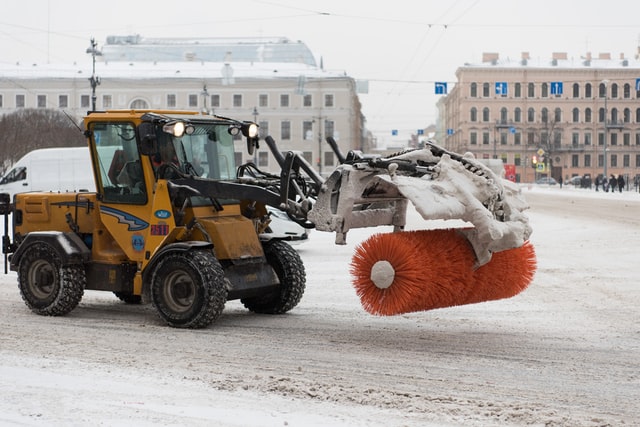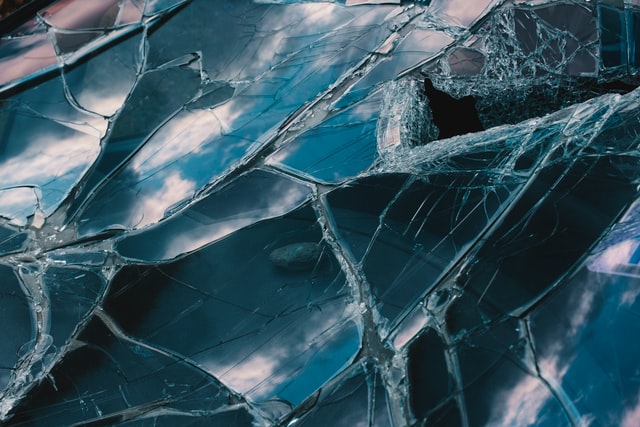
You don’t hear about bullet-resistant polycarbonate sheets in the movies or on TV. In the media and pop culture, it’s all about bullet-proof glass. Well, at the risk of shattering everything you thought you knew, Polymershapes wants to let you in on a little secret: bullet-proof glass doesn’t technically exist, at least not in the way that most people think it does.
What you see on the screen—and what exists in real life—is bullet-resistant plastic. Bullet-proof glass isn’t real for a variety of reasons, beginning with the fact that glass can’t be fully bullet-proof. Few materials can be. Plastic isn’t included among them, but heavy-duty plastic and certain other substances are resistant to the impact from bullets. That’s what you see on armored vehicles and security windows.
In reality, someone probably can shatter so-called bullet-proof glass. It would take time, determination, and large-caliber bullets, but it’s possible. Still, bullet-resistant polycarbonate serves its purpose, as does acrylic, which is another material used to make bullet-resistant doors, windows, and mirrors. It would take a tremendous effort to shatter either material, and unlike genuine glass, neither acrylic nor polycarbonate plastic will send out dangerous, sharp shards. Let’s take a look at how plastic can stand up to bullets.
Polycarbonate Plastic
Much of the bullet-proof and shatter-proof “glass” that you see on TV and experience in real life is actually made of bullet-resistant polycarbonate sheets. But, you ask, how does polycarbonate come to be? How do you turn it into a bullet-resistant material?
Polycarbonate is an ideal plastic for the creation of bullet-resistant windows, mirrors, and glass. It’s a soft plastic, but that makes it more versatile for these purposes. In spite of its softness, it’s unbelievably strong.
One reason that polycarbonate plastic is the preferred material for creating bullet-resistant items is because of its weight. It’s six times lighter than glass. If a vehicle had windows composed of actual glass, then it would add excessive weight. Polycarbonate is a lightweight alternative that poses less of a safety risk.
Now, let’s talk about how this particular bullet-resistant glass is made with polycarbonate. Since polycarbonate is a soft plastic, it’s also extremely malleable. To make bullet-resistant plastic, plastic fabricators will typically layer sheets of polycarbonate with alternating layers of polyurethane. The layered materials then go through a process of heating and cooling, which causes each sheet to become molded to the rest, transforming the layers into a single piece.
This creates three levels of protection, which can effectively stop bullets:
- Level 1 is generally three-quarters (0.75) of an inch thick.
- Level 2 is usually a little more than an inch thick, making it able to absorb the impact of .357 Magnum bullets and withstand rifle shots.
- Level 3 is the strongest and thickest with a thickness of 1.25 inches, allowing it to withstand at least three bullets fired from a .44 Magnum revolver.
The ability to heat and mold polycarbonate is one of the reasons it’s used to make bullet-resistant glass. Another reason is its transparency. While it’s theoretically possible to layer enough sheets of actual glass to create a bullet-resist pane, glass loses its translucence. Because it gets more difficult to see through, it creates a visibility issue that you don’t experience with polycarbonate and other plastics.
Acrylic
In addition to bullet-resistant polycarbonate sheets, some fabricators make bullet-proof glass out of acrylic. It’s lighter than glass but three times heavier than polycarbonate. However, it’s stronger than real glass in spite of being half its weight. At the same time, it looks quite a bit like glass, especially with regards to its clarity.
Its strength helps to make acrylic resistant to bullets. It certainly allows it to resist more forceful impacts. All it takes to stop a bullet is one sheet or pane of acrylic. The only kicker is that it has to be more than an inch thick, at the very least. Unfortunately, if you need a lighter material, then it might not be an option for you. It is heavy, so you might not want it in your car, but it can be ideal for security windows, for example.
The Sandwich Method
We’ve gone to all this trouble to tell you that bullet-proof glass doesn’t really exist, but we’ve spread a bit of a fib. There is a way to incorporate real glass into bullet-proof glass, but the method still revolves on bullet-resistant plastic sheets. Without the polycarbonate, glass is simply glass and it remains prone to shattering.
The sandwich method used to make bullet-resistant “glass” uses lamination. Lamination is somewhat like layering, but lamination can offer a more protective coating, as well. The process relies on the combination of different materials to give it strength and impact-resistance.
Fabricators who work with bullet-resistant panes will take a bullet-resistant polycarbonate sheet and laminate it. That is, they sandwich it between two regular glass sheets. Yet again, by heating and cooling the sandwich, they are able to mold it into a single piece. What’s left is a pane of bullet-resistant glass that’s extremely durable and thick.
One-Way Resistance
There’s a new innovation in plastic fabrication that’s pretty cool. One-way bullet-proof glass sounds more like an idea snatched straight from a science-fiction film, but it’s legitimate. It, too, combines sheets of glass with bullet-resistant plastic.
Making one-way protective glass involves brittle glass and polycarbonate, which is more flexible and malleable. The layer of brittle glass goes on the outside. The polycarbonate layer goes behind it. Upon hitting the layer of glass—which, again, is brittle—a bullet will cause the glass to shatter inward. It breaks toward the polycarbonate, which takes the majority of energy and impact from the bullet.
Even though bullet-proof glass as we think of it doesn’t exist, the processes of making it are fascinating. Bullet-resistant polycarbonate sheets are found in a variety of areas, ranging from vehicle windows to the mirrors in hospitals and the protective panes in banks and gas stations.
To learn more about the fabrication of bullet-resistant plastic or purchase some for your business, get in touch with Polymershapes.






